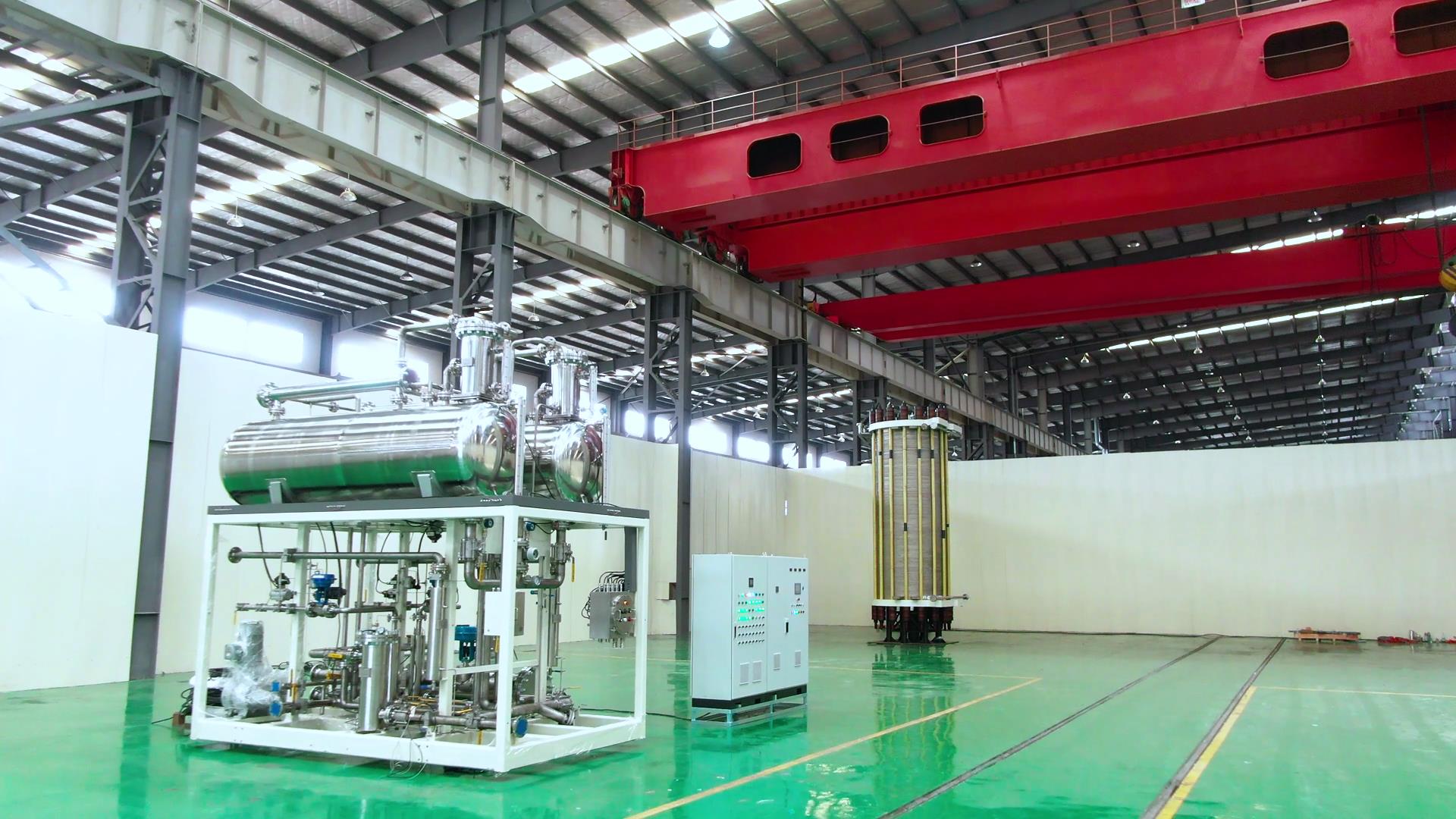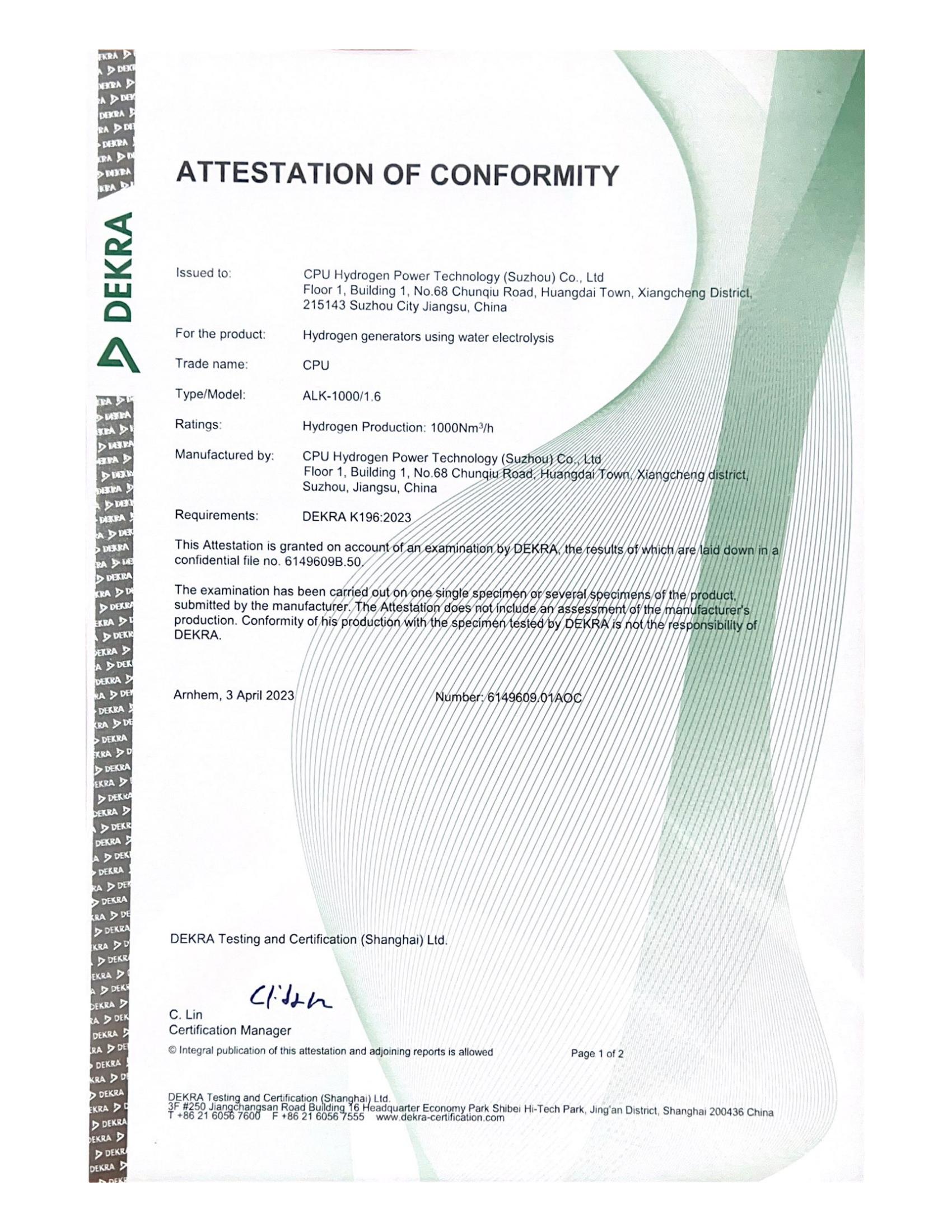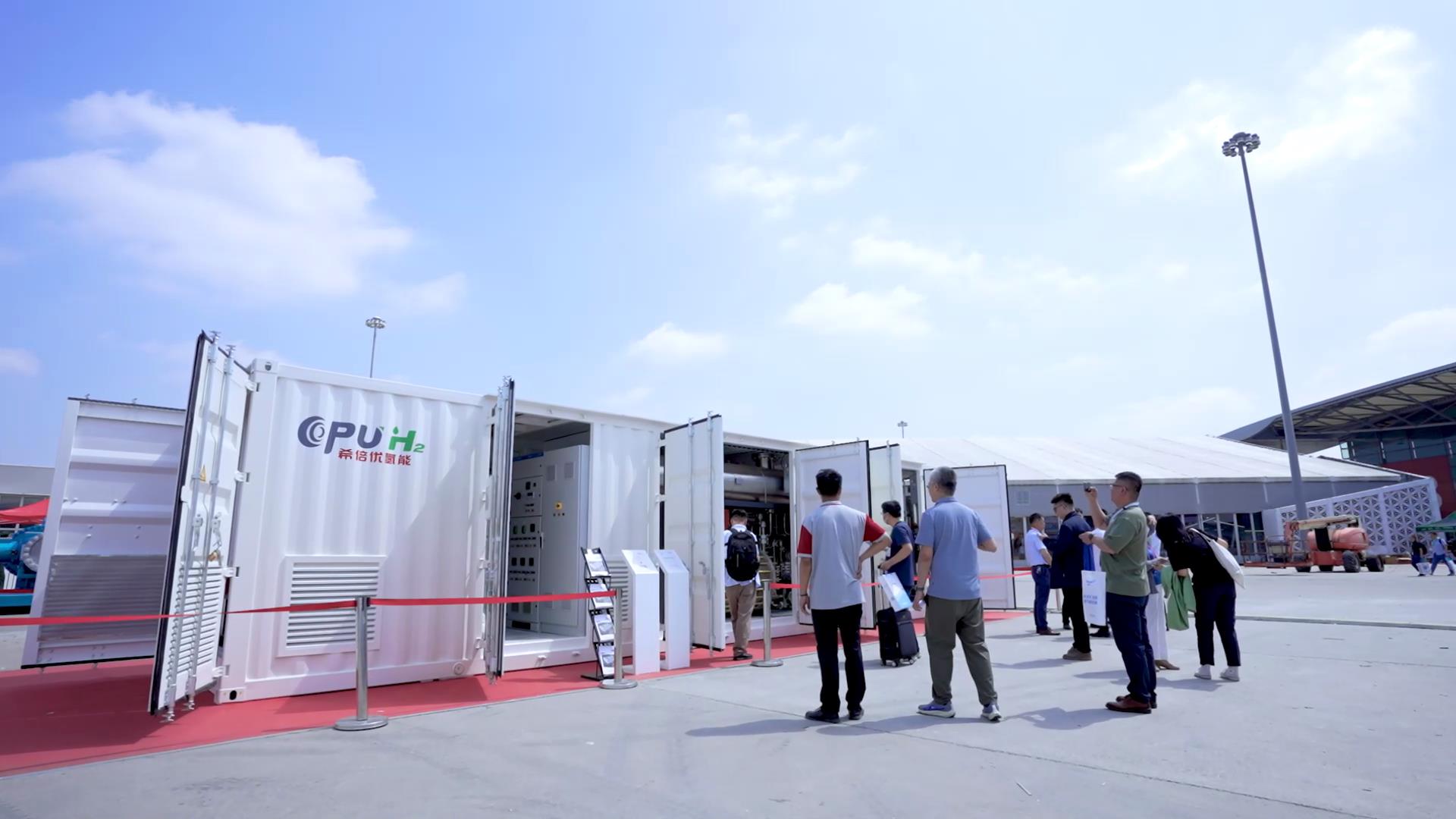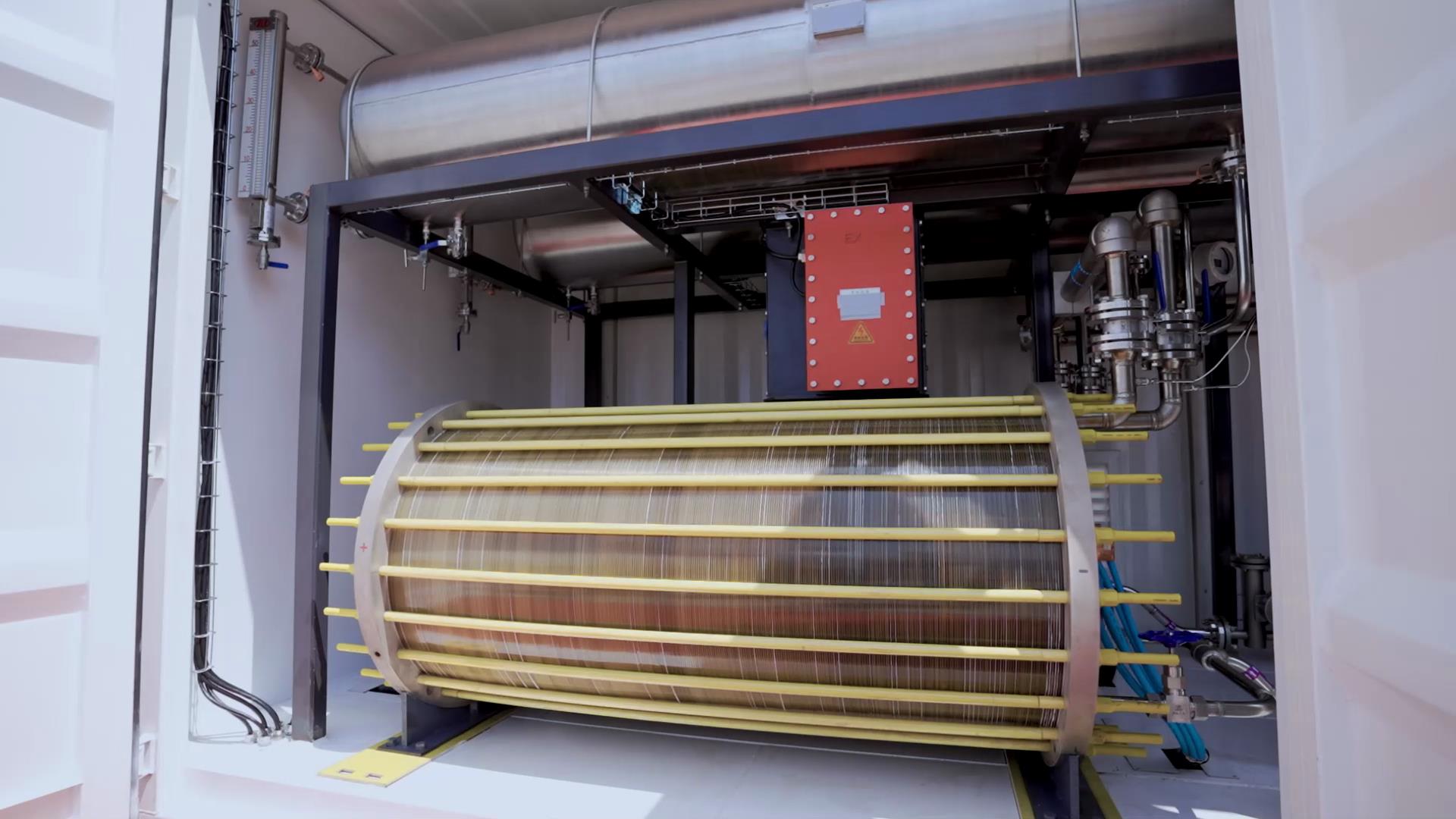Hydrogen energy is a participant in the future of energy! Innovative alkaline electrolytic water technology is indispensable.
Time:2023/8/7 Tag:CPU, Hydrogen Energy, Innovation, Alkaline Water Electrolysis Technology, Energy of the Future
In order to control global warming and reduce reliance on fossil fuels, China has established dual carbon target. The installation of renewable energy sources such as solar, wind, and water power, for electricity generation is continuously increasing. In 2022, the electricity generation from renewable energy in China has reached 2.7 trillion KW·h, accounting for 31.6% of the total electricity consumption in society. This represents a 1.7% increase compared to 2021, which is equivalent to reducing domestic CO2 emissions by about 2.26 billion tons. Renewable energy sources are not only environmentally friendly, but also capable of providing a continuous and uninterrupted energy supply. However, the imbalance between the fluctuation characteristics of solar and wind energy and the demand for electricity will inevitably lead to an excess of green energy. Hydrogen energy will be an important 'partner' for renewable energy.
- Using Efficient Hydrogen Generation Technologies to Support the Consumption of Renewable Electricity
Methods such as battery storage and water storage are too limited in scale for seasonal green energy demands. Electrolyzing water to produce hydrogen will be the best choice right now. Through the water electrolysis reaction, water will be decomposed into hydrogen gas and oxygen gas, the hydrogen gas can then be stored or directly used for energy supply. This approach can address issues related to peak shaving and filling valleys in the power grid, enhance the stability of integrating renewable energy into the grid, and improve grid flexibility and robustness. The construction of the "electro- hydrogen" system is an important way to promote the development of renewable energy and to accelerate the energy transition process.

▲CPU Hydrogen CPUH2-1000/1.6-D
In order to support the large-scale application of green hydrogen and enhance the efficiency of electro-hydrogen conversion, the R&D team of CPU Hydrogen Power Technology Co., Ltd. (referred as "CPUH2") has been continuously exploring and researching methods to reduce energy consumption in electrolyzer. Based on the originalalkaline water electrolysis hydrogen generation technology and equipment, the team has actively pursued innovations in new materials, novel structures, and advanced processes. This effort has led to the independent development of an innovative large-scale alkaline water electrolyzer, the CPU-1000/1.6-D.
Through the test, the large-scale alkaline water electrolyzer has demonstrated excellent compatibility with post-processing systems. The novel bipolar plate structure has resulted in a more uniform distribution of potential-current on the electrode surface, smaller ohmic loss of the electronic conductor, and lower DC energy consumption. The DC energy consumption of the electrolyzer is ≤ 4.3 kW·h/Nm3 at a current density of 2,500 A/m2.

In April this year, the 1000 Nm3/h alkaline water electrolysis hydrogen generation system from CPUH2 has successfully passed the product certification of DEKRA, which verified the high performance and reliability of electrolyzer from CPUH2. It is also highly aligned with the large-scale hydrogen generation demands brought about by the energy transition.
- ALK Hydrogen Generation Technology is the Key to Affordable Green Hydrogen
Hydrogen has been used as an energy source as early as 1902, but why hasn't hydrogen been widespread used until now? Hydrogen is one of the most abundant elements in the universe, yet on Earth, the stock of hydrogen gas is very limited. This is because the single electron of a hydrogen atom is highly susceptible to being captured by other elements to form new substances such as water (H2O). To obtain hydrogen gas, it is necessary to break the chemical bonds between hydrogen atoms and other atoms, which would require a lot of energy and therefore makes hydrogen generation very expensive. But the situation is different now: the dual carbon targets has provided significant impetus for the development of renewable energy, and the cost of renewable electricity has decreased significantly, marking a crucial turning point for development of hydrogen energy.
Considering factors like the availability, maturity and economy of resources, CPUH2 is currently focusing on advancing the ALK hydrogen generation route in order to realize a safe, reliable and practicable journey towards zero-carbon.

▲ CPUH2-200/1.0-C
Based on the demand for affordable hydrogen generation, CPUH2 has recently launched a containerized hydrogen generation system (CPU-200/1.0-C), which can be used in outdoor environments with low construction costs. This system can produce approximately 430 kg of hydrogen with high purity (99.999%) per day, making it easy to move around and expanding its accessibility. The system features an alkaline water electrolyzer with a non-metallic frame and applies a 1-tow-2 structural design to achieve a more compact and lightweight upgrade. In addition, the alkaline water electrolyzer from CPUH2 utilizes a new generation membrane, which provides a high efficiency conversion rate and a system power consumption of ≤55 KW·h/kg.

- Promote Reduction of Carbon Emission in Multiple Industries: Hydrogen Energy Can Make a Big Difference
Accelerating the achievement of carbon neutrality to address climate change is gradually becoming a global consensus. Hydrogen energy, as a clean energy source, is gaining more and more attention.
Europe has proposed a Power-to-X concept, a development path for converting renewable electricity into other energy products, with green hydrogen serving as a pivotal intermediary. In the field of energy, hydrogen energy is being applied in areas such as fuel cell power generation, energy storage and so on. In the field of transportation, hydrogen-powered vehicles have also begun to be commercialized, with China currently ranking first in the world in hydrogen refueling station deployments. Demonstration projects have also begun to be explored and attempted in industries with high carbon emission such as steel- and chemical-industries; in addition, distributed cogeneration systems have been proposed to be applied in areas such as functional heating of buildings, enabling a green and low-carbon lifestyle.
In the future, hydrogen energy has great potential to drive carbon emission reduction in across various sectors. Currently, CPUH2 has established strategic partnerships with many industries for hydrogen equipment supply. Looking ahead, we will work hand in hand with our partners to realize a new future of energy.